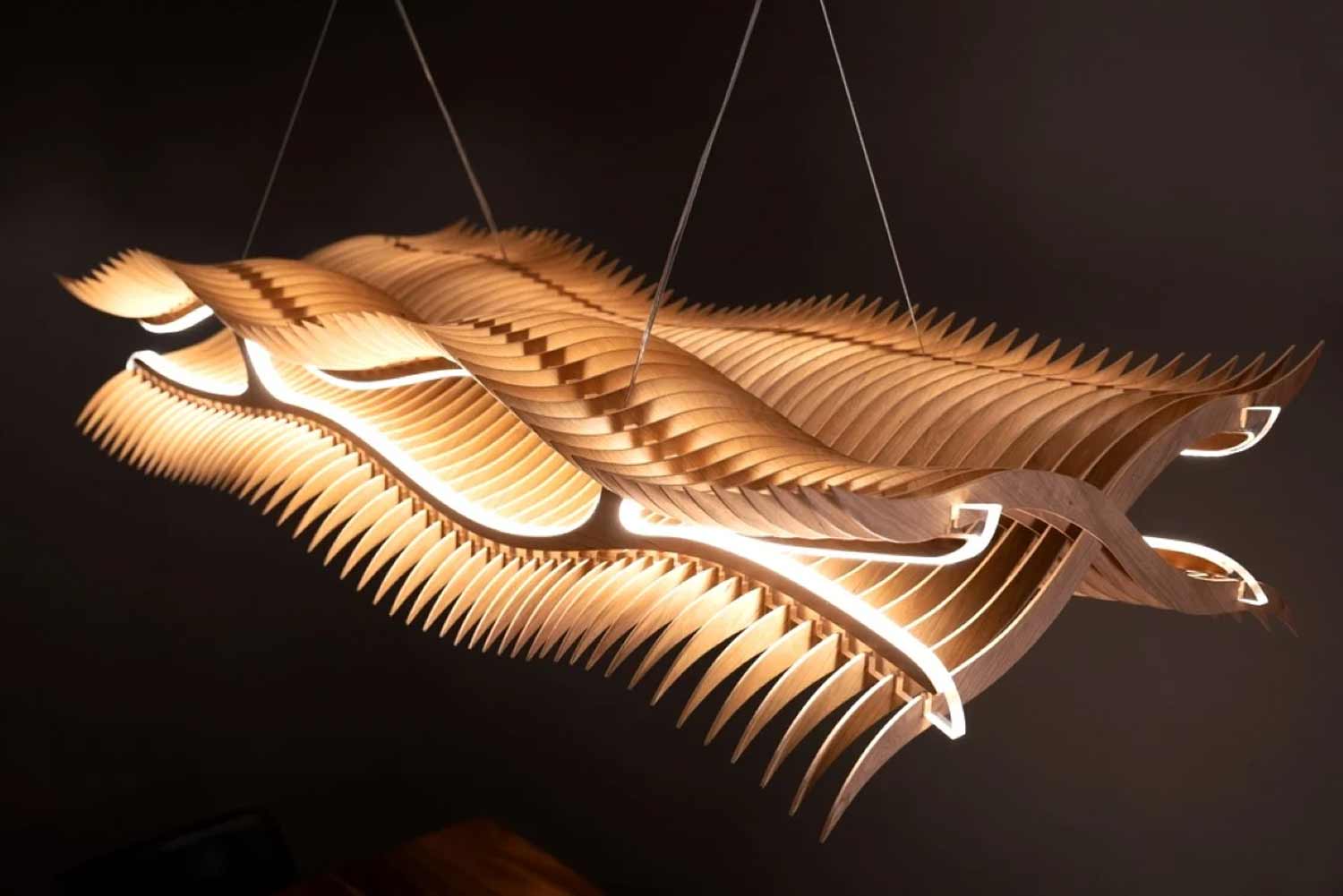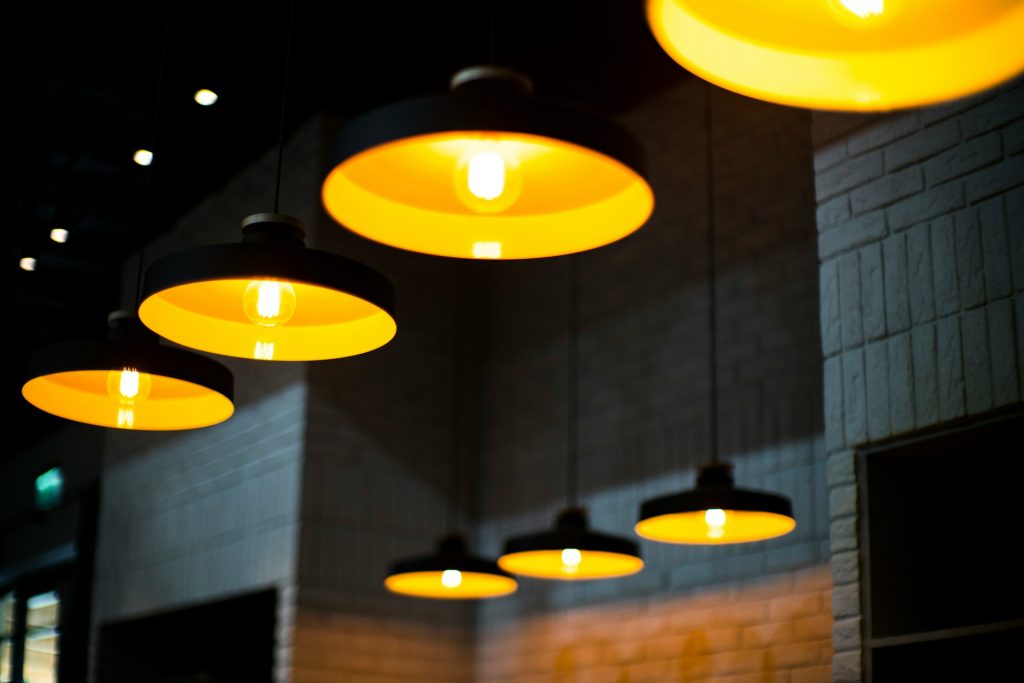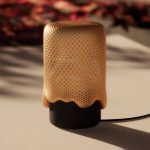Mood lighting is crucial in architecture because it influences a space’s overall appearance and mood. The primary purpose of mood lighting is to set the scene. It does more than just provide adequate light to meet utilitarian needs; it also makes any space feel warm or a lively gathering spot. Mood lighting is an architectural component that benefits renters’ physical and emotional wellness. Mood lighting design may change an average setting into one that is welcoming, comfortable, and functional.
This article will investigate the 10 different types of mood lighting solutions to enhance interior spaces.
Pendant Lights
A pendant lamp is a kind of ceiling-mounted illumination that is sometimes called a drop or suspender. It is typically held up by a metal chain, rod, or string. It is one of the most extensively utilized architectural lighting designs for interior architecture, as it adds elegance and sophistication to the space.
These days, many pendant lights are energy-efficient, low-voltage types, some of which use halogen or fluorescent bulbs. Glass, metal, and plastic are a few of the many materials that pendants can be made of. Pendant lights are typically used in pairs, over dinette sets and kitchen worktops, and occasionally in bathrooms.
LED Strip Lights
Introduced in the early 2000s, an LED strip or ribbon light is a flexible circuit board incorporating surface-mount light-emitting diodes, typically affixed with an adhesive backing. The strip light is incredibly adaptable and may be used in a wide range of applications because it is flexible.
The lights are incredibly portable since they can be operated on a USB device or battery pack and can be used indoors or outdoors, depending on their water resistance characteristics. Strip lights were traditionally used for accent lighting, backlighting, and decorative lighting applications, including cove lighting, creating a warm and inviting atmosphere.
Paper Lanterns
A paper lantern is a lantern made of thin, colored paper. Paper lanterns exist in many shapes and sizes. In their most basic form, they are paper bags with candles or light fixtures inside them. Paper lanterns may be designed into beautiful works of art on any scale and are quite inexpensive.
Paper lanterns, which were originally used for festivals or gatherings, have evolved into a popular décor or lighting item in practically any space, including the living room and dining room. Paper lanterns provide a humorous and cheery mood in any space, which lifts people’s emotions.
Wall Sconces
A wall sconce is a decorative light fixture that is installed on the wall. Sconces are a very old form of light fixture that was usually used with candles and oil lamps. Wall sconces can be installed on the inside or outside of a structure. Modern sconces are commonly used in hallways and corridors to provide illumination and a focal point throughout a long passage.
They are usually positioned in pairs or in many units to create equilibrium. They also function well for framing doors. Beside beds, swing-arm sconces are commonly used to offer task illumination for reading.
Fairy Lights
Fairy lights, often known as Christmas lights, are long strings of lights with ample space between them. Fairy lights work well both indoors and outdoors and are an appealing and practical way to light an area. String lights are an inexpensive lighting option for tiny spaces.
In any setting, fairy lights look fantastic, regardless of the interior design scheme. There are many different sizes, styles, and colours of fairy lights. LED fairy lights stay longer and consume less energy. Because they give soft illumination that creates a cosy and delightful ambience, fairy lights are perfect for bedrooms.
Chandeliers
Originally designed to hold candles, chandeliers are beautiful ceiling-mounted lighting fixtures that emit soothing lighting. Spreading branching supports are typically used to support several lights, often in multiple layers. Chandeliers work nicely in living rooms, bedrooms, and patios, even though they are usually used in dining rooms.
Chandeliers, as opposed to other lighting fixtures, give every space a warm and inviting atmosphere. The chandelier’s lights are reflected and refracted by the use of glass and crystals, lighting the space and creating a calming atmosphere.
Table Lamp
Table lamps are compact, lightweight electric lamps used for lighting tables and other furniture. One of the main advantage of table lamps is their ability to provide a gentle, delicate light that is focused only on a certain part. They can serve multiple purposes in a space and are available in a variety of sizes, shapes, and styles.
Because table lamps provide ambient lighting and can be used to create cozy reading nooks, a welcoming environment, or simply something extra, they are a practical and adaptable way to add a decorative touch to any place.
Floor Lamp
A floor lamp is a kind of lamp that is supported by a tall stand composed of metal, wood, or another material. It is also referred to as a torchère, standard lamp, or torch lamp. A wide variety of forms and designs are achievable with the employment of technologies such as LED floor lamps, fluorescent floor lamps, and halogen floor lamps.
Floor lamps are often positioned behind sofas or in the corners of rooms since the extra light is useful for reading and other things. They can be employed to light up dark areas and typically add visual flair to a space.
Cove Lighting
Cove lighting is a sort of indirect lighting that is positioned in ceiling ledges or recesses as well as high on a space’s walls. It directs light towards the ceiling and down neighbouring walls. The resulting illumination is soft and diffuse. It works particularly well when put above crown mouldings or concealed behind valences.
Cove lighting highlights architectural details and adds depth to lighting designs. It can be used as primary lighting or for ornamental purposes, especially to highlight stunning ceilings. Cove lighting is desirable because it conceals the fixtures while providing an extremely even light.
Track Lighting
Track lighting is a type of lighting in which light fixtures are positioned anywhere on a continuous track device with electrical connections. Tracks can be installed on both ceilings and walls. They can also be suspended with rods from extremely high places, such as vaulted ceilings.
Because track lights are adjustable and directional, they can be used to emphasise key features or works of art (such as artwork or photography) in a home. Track systems use less electricity than typical lighting systems since they use LED bulbs and allow you to change individual lights.






























Leave a comment